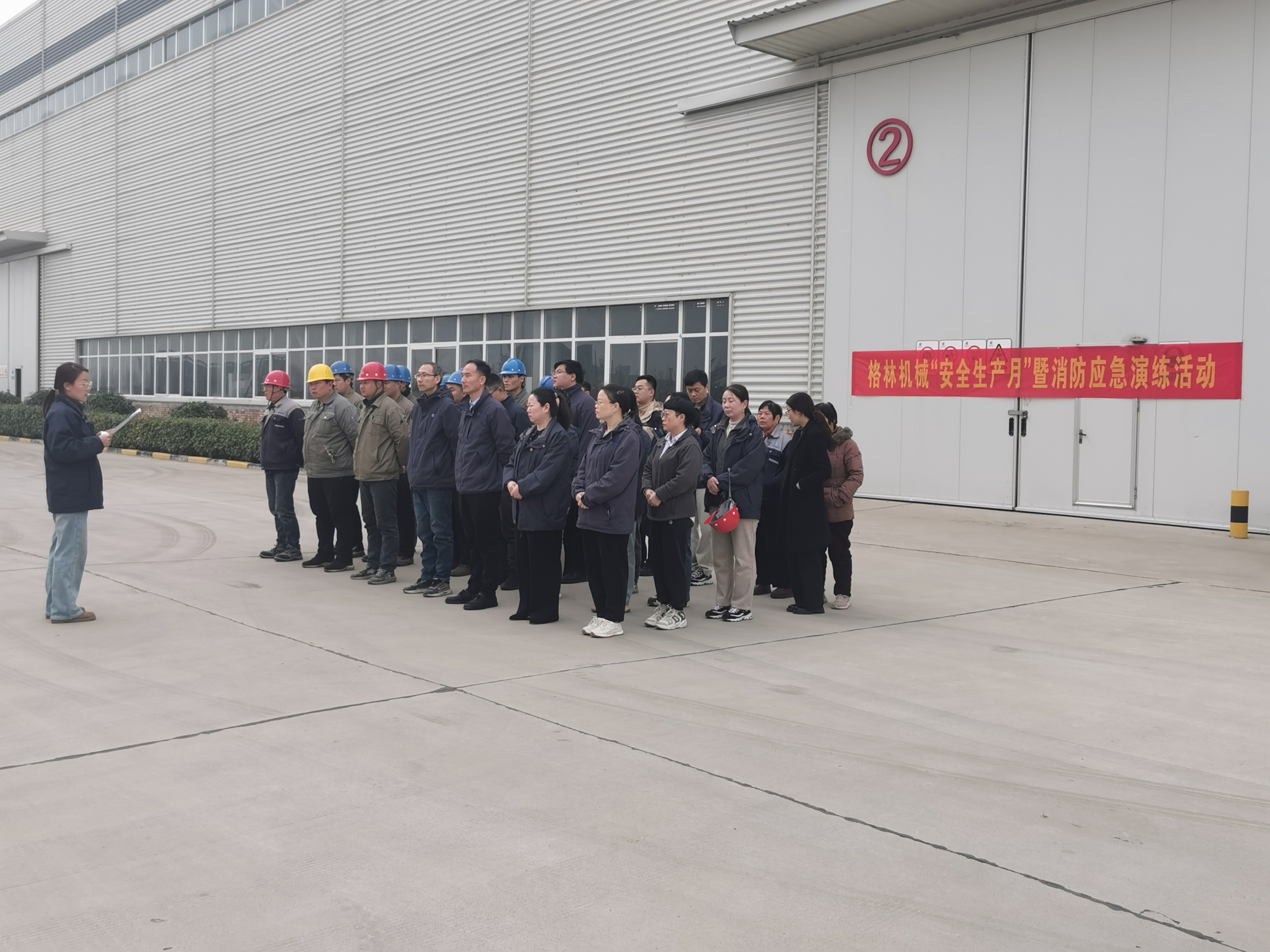Innovative Uses of Vibrating Screens in Modern Mixing Stations
Release Date:
2025-04-20
Innovative Uses of Vibrating Screens in Modern Mixing Stations In today’s rapidly evolving industrial landscape, **vibrating screens** have emerged as a crucial component in **modern mixing stations**, particularly within the manufacturing and construction sectors. Their innovative applications are not only streamlining operations but also significantly enhancing product quality. This article delv
Innovative Uses of Vibrating Screens in Modern Mixing Stations
In today’s rapidly evolving industrial landscape, **vibrating screens** have emerged as a crucial component in **modern mixing stations**, particularly within the manufacturing and construction sectors. Their innovative applications are not only streamlining operations but also significantly enhancing product quality. This article delves into the diverse uses of vibrating screens, highlighting their importance in the context of mixing processes and their impact on overall productivity.
1. Understanding Vibrating Screens
Vibrating screens are mechanical devices used to separate materials based on size and density. They operate by utilizing **vibration**, which helps to move particles through a series of screens or meshes. The design and functionality of vibrating screens can vary, including linear, circular, or elliptical movement, depending on the intended application.
1.1 How Vibrating Screens Work
Vibrating screens consist of a frame, screen surface, and vibratory mechanism. The materials fed into the machine are subjected to vibratory motion, allowing smaller particles to pass through the screen while larger ones are retained. This simple yet effective process plays a critical role in various mixing applications.
1.2 Types of Vibrating Screens
There are several types of vibrating screens used in mixing stations:
- **Linear vibrating screens:** Ideal for screening materials with a high degree of accuracy.
- **Circular vibrating screens:** Suitable for large-scale applications, allowing for greater throughput.
- **Ultrasonic vibrating screens:** Incorporate ultrasonic technology to enhance separation efficiency for fine materials.
2. Importance of Vibrating Screens in Mixing Stations
In mixing stations, the integration of vibrating screens can lead to substantial improvements in efficiency, product consistency, and operational flexibility. Their role extends beyond mere separation; they are instrumental in **optimizing mixing processes**.
2.1 Enhancing Material Quality
One of the primary benefits of using vibrating screens in mixing stations is the enhanced quality of the final product. By effectively removing impurities and oversized particles, vibrating screens ensure that the materials mixed meet the required specifications. This is critical in industries where precision and quality control are paramount.
2.2 Increasing Production Efficiency
Vibrating screens can significantly reduce the time required for mixing processes. By enabling the continuous flow of materials and minimizing downtime, these devices enhance overall productivity. This efficiency translates to cost savings and improved operational performance.
2.3 Facilitating Versatile Mixing Applications
Vibrating screens can be customized to suit various mixing applications. Whether in the production of concrete, asphalt, or other construction materials, these screens can adapt to different material types and mixing requirements, enhancing their versatility.
3. Innovative Applications of Vibrating Screens in Mixing Stations
The innovative applications of vibrating screens in mixing stations are numerous, extending their utility beyond traditional uses.
3.1 Pre-Mixing Screening
In many mixing processes, the initial step involves screening raw materials before they enter the mixer. Vibrating screens efficiently separate fine particles from larger aggregates, ensuring a more homogeneous mixture. This pre-mixing screening is essential for achieving optimal mixing results.
3.2 Inline Screening During Mixing
An innovative approach is to integrate vibrating screens directly into the mixing process. This inline screening allows for real-time monitoring and adjustment of material composition, enhancing the mixing quality and ensuring that the output meets precise specifications.
3.3 Batch Processing and Continuous Mixing
Vibrating screens can be utilized in both batch processing and continuous mixing applications. In batch processing, they help to ensure that each batch meets quality standards, while in continuous mixing, they maintain a constant flow of materials, preventing interruptions in production.
4. Technological Advancements in Vibrating Screens
The evolution of vibrating screen technology has significantly impacted their efficiency and effectiveness in mixing stations.
4.1 Automation and Control Systems
Modern vibrating screens are equipped with advanced automation and control systems, allowing for precise adjustments to vibration intensity and screening parameters. This degree of control enhances the quality and consistency of the mixed product.
4.2 Energy Efficiency Improvements
Innovations in vibrating screen design have led to energy-efficient models that consume less power while maintaining high performance. This not only reduces operational costs but also contributes to more sustainable manufacturing practices.
4.3 Smart Sensors and Monitoring
Incorporating smart sensors into vibrating screens enables real-time monitoring of performance metrics, such as material flow rate and screen wear. This data-driven approach allows operators to make informed decisions, optimizing the mixing process and minimizing downtime.
5. Case Studies: Successful Implementations of Vibrating Screens
Numerous industries have successfully implemented vibrating screens in their mixing stations, yielding impressive results.
5.1 Construction Industry
In the construction sector, vibrating screens have been used to improve the quality of concrete mixtures. By effectively screening aggregates before mixing, companies have reported enhanced durability and strength in their final products.
5.2 Food Industry
The food industry has also benefitted from vibrating screens, particularly in the mixing of powdered ingredients. By ensuring uniformity and preventing contamination, manufacturers have improved product safety and quality.
5.3 Chemical Manufacturing
Chemical manufacturers utilize vibrating screens to separate additives and ensure precise formulations. The ability to adjust screening parameters allows for customization of products to meet specific client requirements.
6. Benefits of Integrating Vibrating Screens in Mixing Stations
The integration of vibrating screens into mixing stations offers numerous advantages.
6.1 Cost Savings
By enhancing efficiency and reducing waste, vibrating screens lead to significant cost savings in mixing operations. These savings are particularly evident in large-scale production environments where even minor improvements can translate to substantial financial benefits.
6.2 Improved Worker Safety
The automation and efficiency brought by vibrating screens reduce the need for manual intervention, which can enhance worker safety. Operators can focus on monitoring and controlling processes rather than handling materials directly.
6.3 Environmental Benefits
Vibrating screens contribute to more sustainable practices by minimizing waste and improving resource utilization. This aligns with the growing emphasis on environmentally friendly manufacturing processes.
7. Challenges and Considerations
Despite their advantages, there are challenges associated with the use of vibrating screens in mixing stations.
7.1 Maintenance Requirements
Regular maintenance is essential to ensure the optimal performance of vibrating screens. Operators must be trained to perform routine checks and address wear and tear promptly.
7.2 Initial Investment Costs
The upfront costs of acquiring advanced vibrating screens can be significant. However, businesses should consider the long-term savings and productivity gains when evaluating these investments.
7.3 Material Compatibility
Not all materials may be suitable for processing with vibrating screens. It is crucial to assess the compatibility of materials to prevent issues during mixing.
8. FAQs about Vibrating Screens in Mixing Stations
8.1 What types of materials can be screened using vibrating screens?
Vibrating screens can handle a wide range of materials, including aggregates, powders, liquids, and slurries, making them versatile for various industries.
8.2 How often should vibrating screens be maintained?
Regular maintenance is crucial, and it is recommended to inspect and service vibrating screens every few months, depending on usage and material type.
8.3 Can vibrating screens be customized for specific applications?
Yes, vibrating screens can be customized in terms of size, mesh type, and vibratory motion to suit specific mixing operations.
8.4 Do vibrating screens require complex installation?
While installation may vary by model and application, many modern vibrating screens are designed for straightforward setup and integration into existing systems.
8.5 How do vibrating screens improve product consistency?
By effectively separating oversized particles and impurities, vibrating screens ensure that the mixed product maintains uniformity and meets quality standards.
Conclusion
Vibrating screens play an indispensable role in modern mixing stations, offering innovative solutions that enhance efficiency, product quality, and operational flexibility. As industries continue to evolve, the integration of advanced vibrating screens will remain a pivotal factor in achieving competitive advantages. By embracing the technological advancements and applications of vibrating screens, businesses can ensure they stay ahead in an ever-changing market landscape.





